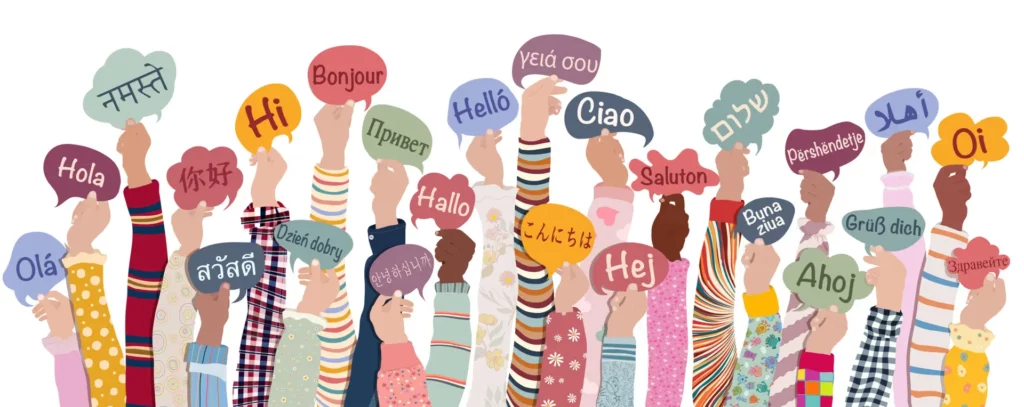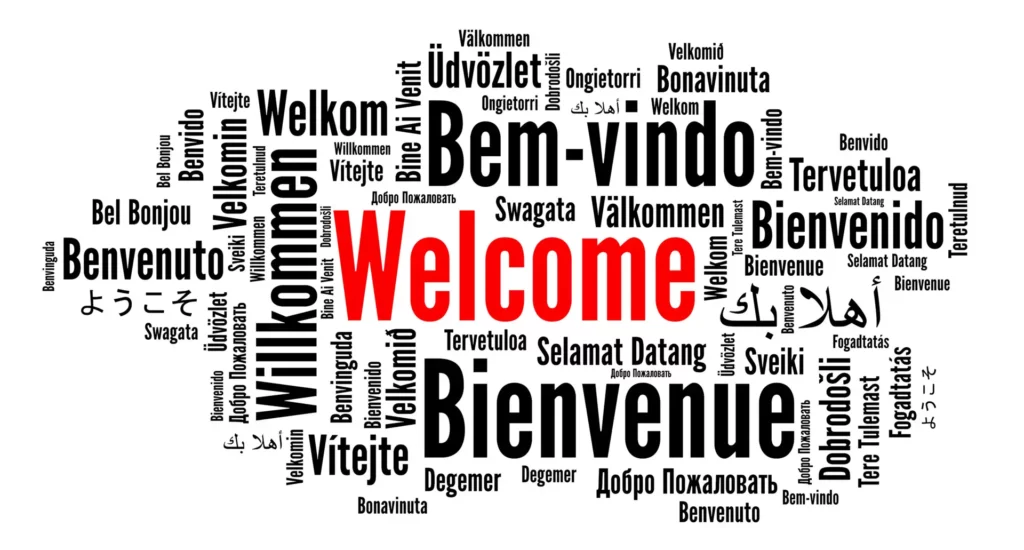Grammar Challenges in Multilingual Communication
In today’s globalized world, the ability to communicate across multiple languages is more valuable than ever. Multilingual communication opens doors to diverse cultures, expands professional opportunities, and fosters personal connections. However, navigating the grammatical landscapes of different languages can pose significant challenges, even for seasoned language learners. These challenges not only affect the clarity of communication but also have the potential to lead to misunderstandings that can impact personal and professional relationships.
The complexity of grammar across languages—from verb conjugations and tense usage to article application and sentence structure—requires a focused approach to overcome effectively. This guide, “Grammar Challenges in Multilingual Communication,” highlights these grammatical hurdles, providing readers with strategies, resources, and insights to enhance their multilingual capabilities. Whether for professional advancement, academic purposes, or personal growth, mastering the grammatical nuances of multiple languages stands as a critical component of effective communication in our interconnected world.

Part 1: Common Grammatical Hurdles in Multilingual Communication
Differences in Sentence Structure
One of the most significant challenges in multilingual communication is the variation in sentence structure across languages. English, for example, typically follows a Subject-Verb-Object (SVO) order, while languages like Japanese use a Subject-Object-Verb (SOV) structure. These differences can lead to confusion and misinterpretation when translating thoughts from one language to another.
Verb Tense and Aspect
Verb tense and aspect represent another area of difficulty, with some languages offering a more comprehensive range of tenses and aspects than others. For instance, English distinguishes between simple and continuous aspects (“I eat” vs. “I am eating”), a feature not present in all languages. This can lead to challenges in expressing time-related nuances in multilingual communication.
Use of Articles
The use or omission of articles (“a,” “an,” and “the” in English) varies significantly across languages. Some languages, like Russian, do not use articles, which can make it challenging for speakers to use them in languages that do accurately. Misuse or omission of articles can alter the meaning of sentences or make them sound unnatural to native speakers.
Gender and Case
Languages like Spanish and German use grammatical gender and case systems, which can be particularly challenging for speakers of languages without these features. Navigating the correct gender of nouns and the changes in form that nouns and adjectives undergo depending on their role in a sentence (nominative, accusative, dative, etc.) adds complexity to multilingual communication.
Understanding and Overcoming Challenges
The grammatical differences outlined above underscore the complexity of multilingual communication and highlight the importance of targeted strategies to address these challenges. By recognizing and understanding these common hurdles, language learners and communicators can begin to develop the skills necessary to navigate the grammatical nuances of multiple languages effectively. Subsequent sections of this guide will delve deeper into strategies for overcoming these challenges, fostering more transparent and effective communication across linguistic boundaries.

Part 2: Strategies for Overcoming Multilingual Grammar Challenges
Navigating grammar in multilingual communication requires a blend of strategic learning and practical application. Here’s how to address and overcome the grammatical challenges identified in Part I.
Increased Exposure
Exposure to the target language in various contexts can help intuitively understand its grammatical structures.
- Immersive Learning: Engage with native speakers through language exchange platforms or spend time in environments where the target language is spoken.
- Extensive Reading and Listening: Consume media in the target language, including books, movies, podcasts, and news, to familiarize yourself with its grammatical nuances.
Language Learning Resources
Utilize structured resources focused on grammar to build a strong foundation.
- Online Courses and Apps: Platforms like Duolingo, Babbel, and Rosetta Stone offer courses tailored to different languages and proficiency levels, emphasizing grammar.
- Grammar Guides and Textbooks: Invest in comprehensive grammar books specific to the language you’re learning. Books often provide detailed explanations, examples, and exercises for practice.
Practical Exercises
Regular practice is crucial for reinforcing grammatical rules and ensuring their correct application.
- Writing Exercises: Keep a journal in the target language, focusing on using various grammatical structures. Seek feedback from native speakers or language teachers.
- Speaking Drills: Participate in speaking activities, such as language meetups or conversation classes, where you can practice and receive real-time corrective feedback.

Part 3: The Role of Technology in Navigating Grammar Challenges
Technology offers valuable tools for understanding and practicing grammar across languages, making learning more accessible and practical.
Language Learning Software and Apps
- Grammar-Specific Apps: Apps like Grammarly offer language-specific versions that help learners practice and apply grammatical rules correctly.
- Interactive Language Platforms: Websites and apps that offer interactive exercises and quizzes can be particularly helpful in practicing grammar in context.
Online Translation Tools
While online translators are helpful, they have limitations and should be used judiciously.
- Limitations: Be mindful of the accuracy of translation tools, especially with complex sentences or idiomatic expressions. They should not be relied upon exclusively for learning grammar.
- Best Practices: Use translation tools as supplementary aids for understanding basic sentence structures or quick translations and cross-referencing with reliable grammar resources.

Part 4: Enhancing Professional and Personal Communication
Mastering grammar in multiple languages enhances professional and personal communication, allowing for more precise, more effective exchanges.
In Professional Settings
- Clear Business Communication: Ensure the grammar of business documents, emails, and presentations to maintain professionalism and clarity. When necessary, utilize professional translation services for important documents.
- Multilingual Negotiations: Understanding the grammatical nuances of a language can aid in negotiations and business discussions, allowing for more precise communication and fostering trust.
In Personal and Social Contexts
- Cultural Connection: Accurate grammar use in personal communication strengthens cultural ties and shows respect for the language and its speakers.
- Social Media and Blogs: When engaging on social media or writing blogs in a second language, attention to grammar can enhance the readability and appeal of your content, attracting a wider audience.
Bridging the Gap
The grammar challenges in multilingual communication are surmountable with the right strategies, resources, and technology. Individuals can enhance their grammatical proficiency across languages by focusing on increased exposure, structured learning, and practical application. This improvement in grammar improves the clarity and effectiveness of communication. It deepens connections in both professional and personal settings, underscoring the importance of grammar in the rich tapestry of multilingual interaction.

Part 5: Cultural Sensitivity and Grammar in Multilingual Communication
Understanding and adapting to a language’s grammatical nuances is not just about mastering its rules but also about appreciating the cultural context in which it operates. Grammar can reflect cultural peculiarities, and being attuned to these subtleties is crucial for effective and respectful multilingual communication.
Understanding Linguistic Nuances
- Cultural Expressions: Certain grammatical constructions may carry cultural meanings and implications beyond their literal translation. Being aware of these can enhance understanding and prevent miscommunication.
- Formality Levels: Many languages have different levels of formality built into their grammar. Using the appropriate level can show respect and understanding of social norms.
Adapting to Cultural Norms
- Language Usage: Pay attention to how native speakers use the language in different contexts, such as formal business meetings versus casual conversations, and adjust your usage accordingly.
- Continuous Learning: Stay open to feedback from native speakers and be willing to adjust your grammatical usage to better align with cultural expectations and norms.

Part 6: Case Studies and Real-World Examples
Real-world examples are powerful illustrations of how individuals and organizations have successfully navigated grammar challenges in multilingual communication.
Success Stories
- Global Companies: Many international businesses have excelled in multilingual marketing by carefully adapting their messaging to fit grammatical and cultural norms across languages, increasing brand loyalty and market penetration.
- Language Learners: Individual stories of language learners who achieved proficiency through immersive experiences, dedicated practice, and the strategic use of technology highlight the effectiveness of combining various strategies for grammatical mastery.
Lessons Learned
- Flexibility and Adaptability: Successful multilingual communicators often emphasize the importance of flexibility in language use and the willingness to adapt based on feedback and changing contexts.
- The Value of Persistence: Overcoming grammatical challenges requires persistence and a commitment to continuous improvement and learning.
Concluding Grammar Challenges in Multilingual Communication
The journey through the landscape of grammar in multilingual communication is challenging and rewarding. This guide has navigated the common grammatical hurdles encountered in multilingual settings and provided strategies for overcoming them, from leveraging technology and resources to embracing cultural sensitivity. Mastering grammar across languages enhances the clarity and effectiveness of communication and bridges cultural divides, fostering more profound understanding and connections.
As the world becomes increasingly interconnected, the ability to communicate effectively in multiple languages has never been more crucial. By embracing the strategies outlined in this guide, learners and professionals alike can enhance their multilingual communication skills, opening doors to new opportunities and enriching their personal and professional lives.
In conclusion, mastering grammar in multilingual communication is a testament to the power of language as a tool for connection and understanding. It requires dedication, flexibility, and an openness to learning and adaptation. With the right approach and resources, the challenges of multilingual grammar can be navigated successfully, paving the way for more effective and meaningful interactions across languages and cultures.

Further Exploration
For those eager to dive deeper into the intricacies of English, countless resources await. From comprehensive grammar guides to interactive language learning platforms, the tools at your disposal are more accessible than ever. Engage with these materials, challenge yourself with new exercises, and remain curious and open to discovery. We offer a line of comprehensive grammar and punctuation courses and feature a mastery quiz bundle to cement your further mastery of grammar and punctuation. Feel free to access the endorsed resources below to enhance your learning experience.





